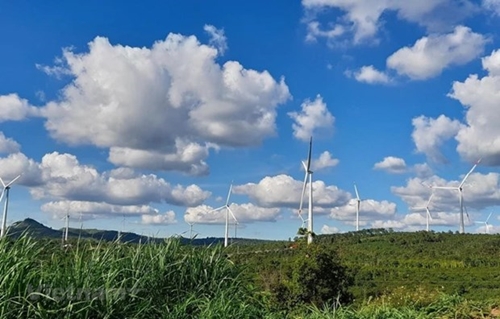In Southeast Asia, for instance, energy demand has increased an average of roughly 3% a year for the past two decades – with fossil fuels meeting a sizeable portion of this, he said.
    |
 |
|
Wind turbine towers in Vietnam |
The International Energy Agency noted that coal, natural gas, and oil are the largest contributors to the region’s energy mix, adding that fossil fuel imports are key to powering the region.
The same IEA report found that the region is undergoing a steady worsening in its energy trade balance, as fossil fuel demand outpaces local production. It is, therefore, important if the region could make the transition to renewable and sustainable energy faster from an economic perspective as well as an environmental one. Furthermore, this would also be in line with governments’ aspirations across Southeast Asia to realize long-term plans for a more secure and sustainable future.
He said that due to the rising demand for digitized services, the region has seen an unprecedented boom in the market for data centers, citing global management consulting firm Kearney’s study which said the region’s data center colocation market is projected to grow by 16.5% from 2019 to 2026 with a value of 6.5 billion USD.
Unfortunately, data centers come with massive carbon footprints due to the tremendous amounts of electricity consumed, water utilized, and carbon emissions generated.
They must prioritize technology, energy and water efficiency, and sustainability in their operations, he said, adding key to sustainable development of the centers is to pen strategic plans to branch out digital infrastructure.
He stressed that the push for renewable energy and sustainable practices in both energy and data center sectors is crucial to efforts for a brighter future without dampening economic growth, adding Southeast Asian countries could make contribution to reducing greenhouse gas emissions and shaping up a sustainable environment in the future.
Source: VNA